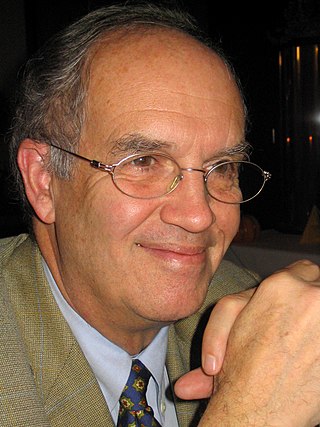
Atle Selberg was a Norwegian mathematician known for his work in analytic number theory and the theory of automorphic forms, and in particular for bringing them into relation with spectral theory. He was awarded the Fields Medal in 1950 and an honorary Abel Prize in 2002.
Gorō Shimura was a Japanese mathematician and Michael Henry Strater Professor Emeritus of Mathematics at Princeton University who worked in number theory, automorphic forms, and arithmetic geometry. He was known for developing the theory of complex multiplication of abelian varieties and Shimura varieties, as well as posing the Taniyama–Shimura conjecture which ultimately led to the proof of Fermat's Last Theorem.

Oscar Zariski was an American mathematician. The Russian-born scientist was one of the most influential algebraic geometers of the 20th century.

Armand Borel was a Swiss mathematician, born in La Chaux-de-Fonds, and was a permanent professor at the Institute for Advanced Study in Princeton, New Jersey, United States from 1957 to 1993. He worked in algebraic topology, in the theory of Lie groups, and was one of the creators of the contemporary theory of linear algebraic groups.
In number theory, the Elliott–Halberstam conjecture is a conjecture about the distribution of prime numbers in arithmetic progressions. It has many applications in sieve theory. It is named for Peter D. T. A. Elliott and Heini Halberstam, who stated a specific version of the conjecture in 1968.

Barry Martin Simon is an American mathematical physicist and was the IBM professor of Mathematics and Theoretical Physics at Caltech, known for his prolific contributions in spectral theory, functional analysis, and nonrelativistic quantum mechanics, including the connections to atomic and molecular physics. He has authored more than 400 publications on mathematics and physics.

Phillip Augustus Griffiths IV is an American mathematician, known for his work in the field of geometry, and in particular for the complex manifold approach to algebraic geometry. He is a major developer in particular of the theory of variation of Hodge structure in Hodge theory and moduli theory, which forms part of transcendental algebraic geometry and which also touches upon major and distant areas of differential geometry. He also worked on partial differential equations, coauthored with Shiing-Shen Chern, Robert Bryant and Robert Gardner on Exterior Differential Systems.

In analytic number theory the Friedlander–Iwaniec theorem states that there are infinitely many prime numbers of the form . The first few such primes are

John Friedlander is a Canadian mathematician specializing in analytic number theory. He received his B.Sc. from the University of Toronto in 1965, an M.A. from the University of Waterloo in 1966, and a Ph.D. from Pennsylvania State University in 1972. He was a lecturer at M.I.T. in 1974–76, and has been on the faculty of the University of Toronto since 1977, where he served as Chair during 1987–91. He has also spent several years at the Institute for Advanced Study. In addition to his individual work, he has been notable for his collaborations with other well-known number theorists, including Enrico Bombieri, William Duke, Andrew Granville, and especially Henryk Iwaniec.
Maruti Ram Pedaprolu Murty, FRSC is an Indo-Canadian mathematician at Queen's University, where he holds a Queen's Research Chair in mathematics.

Shimshon Avraham Amitsur was an Israeli mathematician. He is best known for his work in ring theory, in particular PI rings, an area of abstract algebra.
János Kollár is a Hungarian mathematician, specializing in algebraic geometry.
Charalambos Dionisios Aliprantis was a Greek-American economist and mathematician who introduced Banach space and Riesz space methods in economic theory. He was born in Cefalonia, Greece in 1946 and immigrated to the US in 1969, where he obtained his PhD in Mathematics from Caltech in June 1973.
Sergei Vladimirovich Konyagin is a Russian mathematician. He is a professor of mathematics at the Moscow State University. His primary research interest is in applying harmonic analysis to number theoretic settings.

Aleksandr Sergeyevich Merkurjev is a Russian-American mathematician, who has made major contributions to the field of algebra. Currently Merkurjev is a professor at the University of California, Los Angeles.

Charles Alexander Weibel is an American mathematician working on algebraic K-theory, algebraic geometry and homological algebra.

Raymond O'Neil Wells Jr., "Ronny", is an American mathematician, working in complex analysis in several variables as well as wavelets.

Stephen Samuel Gelbart is an American-Israeli mathematician who holds the Nicki and J. Ira Harris Professorial Chair in mathematics at the Weizmann Institute of Science in Israel. He was named a fellow of the American Mathematical Society in 2013 "for contributions to the development and dissemination of the Langlands program."
Daniel Willis Bump is a mathematician who is a professor at Stanford University. He is a fellow of the American Mathematical Society since 2015, for "contributions to number theory, representation theory, combinatorics, and random matrix theory, as well as mathematical exposition".
Dietmar Arno Salamon is a German mathematician.













